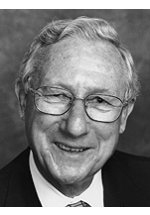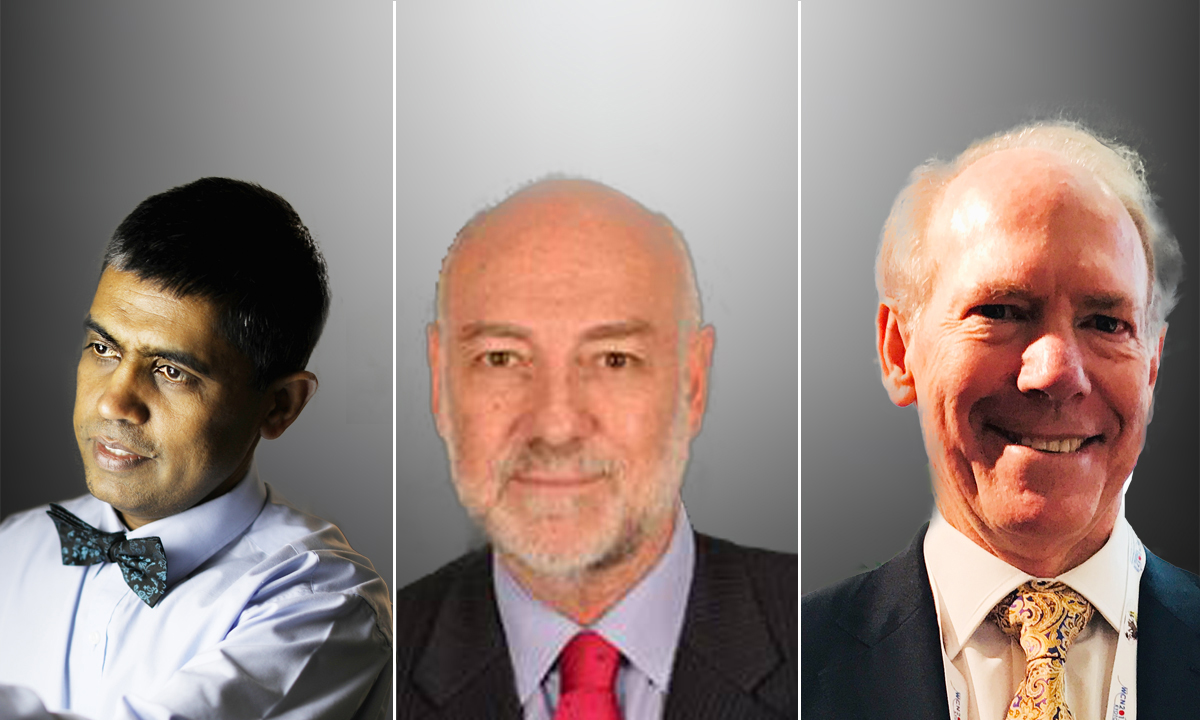THE neurological world, and Australian neurology in particular, lost an outstanding leader on 20 February 2019, with the death of Professor James (Jim) Waldo Lance in Sydney, at age 92.

Prof James Lance
His contribution to neurology, neurological training and headache medicine, in particular, together represent an outstanding legacy of a life experienced to the full.
James Lance was born in Wollongong, NSW, in 1926. On his mother’s side, his forbears were veterinarians who came to Australia from Edinburgh in about 1840. His maternal grandfather studied veterinary science and founded the School of Veterinary Science at the University of Sydney in around 1909 (the JD Stewart building at University of Sydney is named after him).
Growing up in Wollongong as a small child, Jim Lance had asthma. His parents felt it was better to send him to a boarding school near Moss Vale, NSW, at the age of 7 years, which settled his asthma. Tudor House, the boarding school, had a famous headmaster, Mr John Medley, who was later Sir John Medley, the Vice Chancellor of the University of Melbourne and Chairman of the Australian Broadcasting Corporation. Dr Cotter Harvey, a respected respiratory physician from Sydney visited the school to give a talk on breathing problems. Jim asked a question afterward: “why do people yawn?” Dr Harvey replied: “well, I don’t know that I can give you an answer to that question,” which was a revelation to Jim that grown-up specialists could not answer all questions.
At the beginning of World War II in 1939, Jim went to Geelong Grammar School in Victoria. In 1944, he had to change to the King’s school in Parramatta, NSW, due to difficulties in interstate travel at that time. He was enthused by chemistry there and entered the University of Sydney Medical School in 1944, completing his degree in 1950.
There was no formal research component to the undergraduate curriculum at that time. The Professor of Bacteriology, the late Dr Hugh Ward, introduced Henry Harris and Jim Lance to Howard Florey, of penicillin fame, who advised them on a potential research career. They both flew down to Melbourne to embark on research experience. Henry Harris adopted the advice so well to the extent that he replaced Florey when he retired and became the Regius Professor of Medicine with a distinguished scientific career.
Jim Lance chose to return to Sydney and met with Peter Bishop, an experimental neurophysiologist, and then embarked on research into the pyramidal tract. He also began clinical work as a resident medical officer at the Royal Prince Alfred Hospital (1950–1951). Cutting his residency short, Professor Lance took up a National Health and Medical Research Council Fellowship at the University of Sydney (1952–1953) to work towards his Doctor of Medicine degree, which he was awarded in 1955. He became firmly engrossed in neurology and with research. He produced five articles (here, here, here, here and here) from this period, including an article on an attempt to regenerate the pyramidal tract.
In 1954, he traveled to London to train as a neurologist. At that time, the fastest way was a 3-day journey in a propeller-driven aircraft. Jim felt this was prohibitively expensive so he signed up as a ship’s surgeon on a shilling a month for a return trip to England. After a month-long voyage, he arrived in London and accepted a position as assistant house physician at the National Hospital in Queen Square. He became houseman to Sir Francis Walshe, an outstanding neurologist, and learned to master the art of neurology, realising that physiology was the basis of clinical neurology. While at Queen Square, he developed a keen interest in headache.
He returned to Sydney and met his wife-to-be, Judith, for the second time at a dance at St Paul’s college. He had first met her when she got a post in physiology as a medical student. Following their second meeting, the relationship blossomed and the marriage produced five children.
At work, Jim combined teaching and clinical practice with appointments as tutor at St Paul’s College (1956–1960), visiting lecturer at the University of Sydney (1956–1962), superintendent at the Northcott Neurological Centre (1956–1957) and honorary assistant physician at Sydney Hospital (1956–1961) and St Luke’s Hospital (1957–1961).
The late Dr George Selby reignited Jim’s interests in headache medicine in Australia with the large number of patients with headache attending his clinic. The two studied 500 patients with headache in great detail, resulting in a landmark article that identified many features of migraine that had not been previously appreciated, such as the frequent onset of migraine in childhood, the presence of allodynia in many patients with migraine, reflecting the presence of central sensitisation, and the major impact of emotional factors on the migraineur.
In 1960, Jim Lance again left Australia to follow his passion for research work at the Massachusetts General Hospital in Boston, where he became interested in myoclonic epilepsy and described the Lance–Adams syndrome (here and here). He returned to Australia as the founder of the first academic Department of Neurology in Australia in the newly established medical school at UNSW. He remained at UNSW from then, starting as a senior lecturer (1961–1963), then Associate Professor (1964–1974), Professor of Neurology – Personal Chair (1975–1992) and, most recently, as Emeritus Professor.
Alongside his very active research program, Professor Lance continued his busy clinical practice at the Prince Henry and Prince of Wales Hospitals where he was Chairman of the Department of Neurology (1961–1992) and foundation Director of the Institute of Neurological Sciences from 1990 until his retirement. He was a former President of the Australian and New Zealand Association of Neurologists, a founding director of the Australian Brain Foundation, inaugural President of the Australian and New Zealand Headache Society and President of the International Headache Society (1987–1989).
Jim was a mentor to many neurology trainees in Australia and from many other parts of the world. Together with Professor Jim McLeod, they provided a beacon for Australian neurologists and clinician scientists. Through much of the 1970s and 1980s, they were regarded as the most influential neurologists in Australia. Almost all neurology trainees in those times would have had the good fortune to have been exposed to their skill and expertise and a good number of them have gone on to carve their own places in Australian neurology.
Jim had a remarkable power of observation, which enabled him to collect unusual symptoms and signs, collate them and describe them in detail as new entities ranging from benign coital headache to the Harlequin syndrome.
He was a prolific publisher, contributing 33 articles to the Medical Journal of Australia alone from 1959 to 2003, with the last being an invited autobiography. He was the undoubted leader of headache medicine in Australia and greatly influential in headache medicine worldwide. This was recognised when he was honoured with numerous awards from the American Association for the Study of Headache, the British Migraine Association and, in 2015, the International Headache Society Special Recognition Award, presented to him by Peter Goadsby.
Jim was actively involved in the World Federation of Neurology and served as a Vice President from 1989–1997. He was delighted to hear that the World Federation of Neurology would be dedicating the year 2019 to migraine and headache medicine through its World Brain Day initiative on 22 July.
Jim Lance was a gentleman, in the true sense of the word, always courteous and kind. Despite his numerous achievements, he was always humble and was the first to acknowledge the contributions of others. He was passionate about teaching and drew more than the occasional medical student listening to his lectures to a career in neurology. He was the embodiment of the clinician scientist. He had boundless enthusiasm, which was infectious, and was a great mentor to many neurological trainees.
We will all miss him.
Jim Lance is survived by his wife Judy, his five children, 19 grandchildren, one great grandchild and another on the way.
Professor Tissa Wijeratne is Chair (Advocacy and Public Awareness), World Federation of Neurology; Chair of the SIG-Migraine, World Federation of Neurology; Chair of the Annual Lance-Goadsby Migraine Symposium and Oration; Director of the Department of Neurology at Sunshine Hospital, and Research Scholar at the School of Psychology and Public Health, and the College of Science, Health and Engineering at La Trobe University.
Associate Professor Alessandro Zagami works at the Institute of Neurological Sciences, Prince of Wales Hospital and the Prince of Wales Clinical School, UNSW.
Professor William Carroll is President of the World Federation of Neurology; Professor in the Department of Neurology at Sir Charles Gairdner Hospital and the Centre for Neuromuscular and Neurological Disorders, Perron Institute, University of Western Australia.
The statements or opinions expressed in this article reflect the views of the authors and do not represent the official policy of the AMA, the MJA or InSight+ unless so stated.

 more_vert
more_vert
He was a brilliant scholar, a charming and talented clinician, a great friend, and a master of observation and deduction. I had never heard until now of his death and mourn his company while rejoicing in the memories of my contacts with him as a visiting professor Many years ago,
My thoughts and commiserations and sympathy extend to all of his family.
William Pryse-Phillips
One of the nicest, caring and best teacher I have when I was in NSW medical school in the late 60s and while working under him as an MO in Prince Henry Hospital. Best neurologist I have come across. Treasure two of his books on headache. Learn alot on neurology esp headache (migraine) from him. Sadly miss.
Remember him as a great teacher and clinician from medical student days. A loos to the profession
as medical student at prince henry hospital, i was in impressed with prof lance, a patient gentleman with thick headed medical students like me, not to mention his babinski sign with a mercedes ignition key. he loved his ancient merc.
He was , by far, the most gifted teacher, that one could experience. His lectures, tutorials, etc.,should have been videotaped for all time. He could make the most difficult neurological treatises (anatomy, physiology, clinical) seem pleasingly simple and obvious-even though they weren’t- by removing all fear of the subject, and instilling a desire to learn a bit more about it.
Vale Prof.Lance-I had the privilege of being one of your many students.
Professor Lance taught me as a medical student in the 1980s.
I remember him as the consummate gentleman,scholar, and mentor.
Even as a world authority in neurology his generosity of time, patience, and charm to his year 4 group of 6 medical students was unlimited.
Although I pursued a career in respiratory medicine i will always remember Professor Lance and due to his trainingng I never underestimate the neurotically input into breathing especially in sleep!